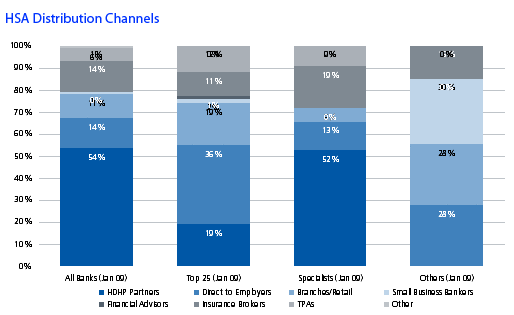HSA Benchmarking Analysis: Market Trends and Economics 2009
Abstract
Health savings accounts continue to be adopted widely, with an ever-growing number of accounts and assets. Between January 2008 and January 2009, participants in the latest HSA benchmarking survey from Celent experienced a 46.1% increase in the number of HSAs. During the same period, survey participants saw their asset base grow by 62.6%.
This will likely turn out to be the year that significant healthcare reform is written into legislation in the US. Health savings accounts (HSAs) are expected to survive these reforms, and for good reason. If healthcare reforms were to write HSAs out of existence, they would discard all the efforts behind one of the fastest-growing retail banking products today.
One of the main findings of Celent’s most recent HSA benchmarking exercise is the robust growth of HSAs. Other key findings include:
- Between January 2008 and January 2009, average account balances grew by only 13% to $1,561. This low growth rate can be attributed to a high number of unfunded accounts (accounts with no contributions during the preceding 12 months), which stood at 18%. The reasons for this are the relatively high number of accounts coming online in January 2009 and some banks’ failure to systematically purge inactive accounts.
- Investments fell of 5% of total assets. This is hardly a surprise, given the recessionary environment, unemployment, and falling investment values. What is quite surprising is that for the larger HSA players, the number of accounts with investment balances barely register; such accounts made up only 1–2% of all accounts.
- The specialist segment players are enjoying increased revenue per account, up to $84. This growth can be largely traced to improved management of DDA margins/spreads.
- In terms of distribution, the top 25 and specialist segments are slowing moving to resemble each other. Top 25 players are gaining more sales through health plan channels, and specialists are building more business in the direct-to-employer channel.
- Debit cards are attached to almost all HSAs, but are only used for 66% of the funds disbursed. Checks continue to hold a good share (20%) of disbursements, while a new disbursement method, integrated payments, accounts for 1% of dollar volumes.

"HSA pricing continues to decline, with average collected monthly fees now hovering just above the $2 mark," says Red Gillen, senior analyst with Celent's Banking group and author of the report. "In fact, some HSA players are even preparing for the eventuality when HSAs go the way of checking accounts. In other words, free."
This research is an update of Celent’s previous HSA benchmarking reports and contains newly collected information. This report measures banks' most relevant HSA performance criteria and provides an analysis of underlying factors and trends.

